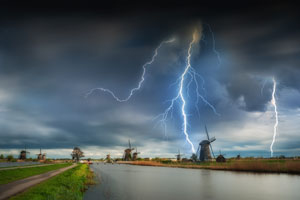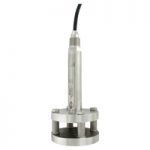 Electrostatic discharge (ESD) is a unique phenomenon that can be seen in everyday life. The effects of ESD can be seen by rubbing a balloon on your head, resulting in your hair sticking to the balloon, or by touching a doorknob or a pet in a dry building and receiving a static shock.
Electrostatic discharge (ESD) is a unique phenomenon that can be seen in everyday life. The effects of ESD can be seen by rubbing a balloon on your head, resulting in your hair sticking to the balloon, or by touching a doorknob or a pet in a dry building and receiving a static shock.
In irrigation, well water pumping, and pressure boosting applications, ESD can cause larger issues than just a small shock to your finger. Because plastics used in PVC pipes are insulators, the moving water builds up static electric charges. Eventually, this static electric buildup will discharge through an ungrounded pathway (e.g. instrumentation or sensors used to control a pump).
 Another electrical issue is surge. Electrical surges can be caused by lightning strikes near an installation location or nearby power lines. A single lightning strike, even a half-mile away, can be powerful enough to completely burn out electrical instrumentation or sensors.
Another electrical issue is surge. Electrical surges can be caused by lightning strikes near an installation location or nearby power lines. A single lightning strike, even a half-mile away, can be powerful enough to completely burn out electrical instrumentation or sensors.
After a sensor experiences ESD or an electrical surge, it can begin functioning incorrectly by providing a falsely low or falsely high reading. This can, in turn, cause the pump, motor, or drive to continuously operate. Continuous operation can overrun equipment, leading to flooding and water damage to property, as well as damage to the pump itself. An ESD shock or surge can also prevent water from being pumped at all. If the sensors are permanently damaged, they will need to be replaced, resulting in downtime and additional costs.

It is important to ensure high ESD / surge protected instrumentation is used in these applications. This prevents downtime and issues such as flooding or equipment/property damage. Several Dwyer products, including our submersible level transmitters, feature protection against both power supply surges and lightning ground strike transients. Visit our website to learn about Dwyer’s instrumentation and sensor solutions for pumping, pressure boosting, and irrigation applications.
For more information about electrostatic discharge, check out our blog article “What is electrostatic discharge and how can it be prevented?“
